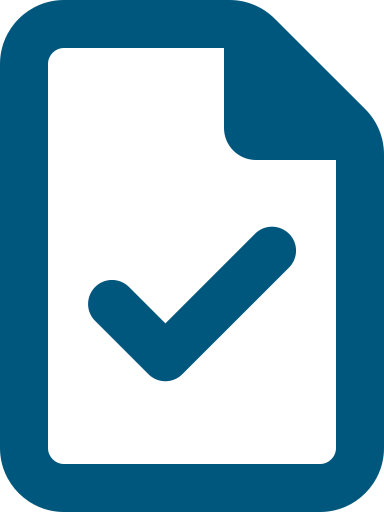What is the outcome you need to achieve?
The provider must encourage and support older people and others to make complaints* and give feedback* about the provider’s delivery of aged care services, without reprisal.
The provider* must acknowledge and transparently manage all complaints* and feedback* and use complaints* and feedback* to contribute to the continuous improvement* of aged care services.
Updates to guidance
An updated version of the strengthened Standards was published by the Department of Health, Disability and Ageing on 18 February 2025. Please see here for more information Strengthened Aged Care Quality Standards – February 2025 | Australian Government Department of Health, Disability and Ageing.
The Commission is currently updating our guidance content to reflect these changes. Please ensure you check back regularly.
Actions
The provider implements a complaints and feedback management system to receive, record, respond to and report on complaints and feedback.
The provider encourages and supports individuals, supporters of individuals and others to make complaints and give feedback.
Individuals are empowered to access advocates, language services and other ways of raising and resolving complaints and feedback.
The provider takes timely action to resolve complaints and uses an open disclosure process when things go wrong.
The provider collects and analyses complaints and feedback data. Outcomes are reported to the governing body and individuals and inform the provider’s quality system to improve the quality of funded aged care services.
The provider regularly reviews and improves the effectiveness of the complaints management system.
Why is this outcome important?
Outcome 2.6b explains providers’ obligations to acknowledge, manage and respond to feedback* and complaints*. A strong feedback* and complaints* management system* is important for addressing issues that come up in the delivery of care and services in a timely* way. By encouraging older people and others to share their feedback* and make complaints* without fear of reprisal, you can support an environment of confidence and trust.
Outcome 2.6b highlights that acknowledging and transparently managing feedback* and complaints* from older people, their supporters, family, carers* and others can support continuous improvement* in the delivery of care and services. By thoroughly recording, investigating, and learning from feedback* and complaints*, you can mitigate the risk of issues happening again and improve how effective your feedback* and complaints* management system* is. This can also help you to identify and address areas to improve the quality of care and services. In addition to feedback* for improvement, it’s also important to encourage and acknowledge positive feedback* from older people. Positive feedback* highlights areas where providers are doing well and should continue these practices to support the delivery of high quality care and services.
Regularly* collecting and analysing feedback* and complaints* data from older people helps you to identify organisation-wide issues and make sure you quickly address any patterns or trends. This informs how you manage feedback*, complaints* and your overall quality system* to improve the quality of care and services. This also supports a positive culture of quality care and services and continuous improvement*.
You need to give focus to:
- reporting outcomes* from feedback* and complaints* to older people and the governing body*
- monitoring and evaluating the complaints* resolution process* to see if it’s working.
Key tasks
Providers
Providers
Put in place a feedback* and complaints* management system* that encourages and supports older people and others to make complaints* and give feedback*.
Make sure your feedback* and complaints* management system* outlines:
- clear and documented processes*, roles and responsibilities* on how feedback* and complaints* from older people and others are:
- received
- registered and acknowledged
- recorded
- investigated
- responded to
- managed
- resolved
- reported on
- learnt from to improve care and services.
- how you will encourage and support older people, their supporters, family, carers* and others to provide feedback* and make complaints*. This includes empowering* older people and others to access language services, advocates and external services for raising and resolving complaints* and feedback*. This also includes offering different ways older people can share this information with you and your workers*.
- how you keep feedback* and complaints* confidential, if this is what the older person wants. This needs to be in line with your information management system* (Outcome 2.7). Make sure:
- older people or others do not face retribution because they give feedback* or raise a complaint*
- you make efforts to reduce administrative burden
- you resolve all feedback* and complaints*
- you identify any patterns or trends.
- how you can escalate feedback* and complaints* in a timely* way
- how you can access information about external complaints* and feedback* mechanisms, including the Serious Incident Response Scheme (SIRS)
- processes* to collect, store, use and disclose any information related to feedback* and complaints* from older people with their informed consent*. This needs to be in line with your information management system* (Outcome 2.7).
- how you can provide positive feedback* to encourage and strengthen good practices you observe
- what feedback* or complaints* need to be recorded. Make sure the system* describes any situations where you don’t need to record feedback*. For example, if the older person chooses not to have the feedback* recorded.
- any feedback* or complaints* that you need to respond to. Include:
- who you should involve in this process*
- timeframes
- situations where you need an investigation, such as after an incident* or near miss* (Outcome 2.5).
- how you discuss and resolve complaints*. You should do this in consultation with the older person and others who made the complaint*. Communicate with older people in a way that meets their needs and preferences. Consider their:
- spoken language
- culture
- medical conditions, including cognitive ability
- needs and preferences (Outcomes 1.1 and 3.3).
- how you analyse and resolve complaints* and feedback*. Focus on identifying any trends or organisation-wide issues during performance monitoring. For example, aspects of care which aren’t delivered well may suggest that your organisation needs additional worker* training (Outcome 2.3).
The feedback* and complaints* management system* should also provide guidance and information on how to practise open disclosure* (Outcome 2.3) when things go wrong.
Use your feedback* and complaints* management system* to acknowledge, manage and respond to feedback* and complaints*.
Have mechanisms to provide feedback* and complaints* that work well for older people, their supporters, family, carers* and others. This means that these mechanisms are accessible, prompt and fair for older people. These can include:
- formal complaint* and feedback* channels
- the complaints* escalation process*
- anonymous surveys or questionnaires
- feedback* forms
- the Serious Incident Response Scheme (SIRS) process*
- through a Consumer Advisory Body.
Consider the different ways older people would like to give feedback* and make complaints*. This can include sharing information verbally, in writing, digitally, openly, confidentially and anonymously. Make sure these options are available within your mechanisms for giving feedback* and making complaints*.
Also, consider the language and communication needs and preferences of older people (Outcome 1.1). Facilitate access to supports such as advocates and language services during this process*, if they want it.
If you find issues or ways you can improve through this process*, you need to address them. If things go wrong, you need to:
- practise open disclosure* (Outcome 2.3). This means being open about what has gone wrong. Share what went wrong with older people, their supporters and others they may want to involve, such as family and carers*.
- put in place strategies to mitigate the risk of things going wrong again.
Collect and look for trends in your complaints* and feedback* data from older people, their supporters, family, carers* and others to find organisation-wide issues and ways for the service to improve. Do this as part of your broader performance monitoring activities (Outcome 2.3). Report these outcomes* to the governing body* and older people.
Have a feedback* register to monitor feedback* and complaints* from older people and others.
Put in place strategies to help workers* use the feedback* and complaints* management system* well.
Put in place policies* and procedures* that support and encourage using your feedback* and complaints* management system*. Make sure these are:
- current and informed by the latest contemporary, evidence-based practices*
- regularly* reviewed
- clear and accessible for workers* and relevant people (Outcome 2.7).
Provide workers* with guidance and training on how to use the feedback* and complaints* management system*. This needs to be in line with:
- the organisation’s policies* and procedures*
- worker's* roles and responsibilities*.
Make sure workers* understand:
- their role in the feedback* and complaints* management system*
- how to use the system* to manage feedback* and complaints* you receive when delivering care and services to older people.
The guidance for Outcomes 2.8 and 2.9 has more information on workforce* planning and human resource management.
Monitor how well you use the feedback* and complaints* management system* to manage feedback* and complaints* from older people and others.
Regularly* review your feedback* and complaints* management system* to make sure it works well for older people and others. Look for ways to improve the system*.
To check if you’re managing feedback* and complaints* well, you can review:
- older people’s care and service documents (Outcome 3.1)
- complaints* and feedback*
- incident* information (Outcome 2.5)
- worker* performance and how well they’re using the feedback* and complaints* management system*. You can do this through quality assurance and system* reviews (Outcome 2.9).
- feedback* meeting minutes and records.
Also, talk with older people, their supporters and others they may want to involve, such as families and carers*, about the care and services they receive (Outcome 2.1). For example, ask them if they know about the ways they can make a complaint* or give feedback* on their care and services. These conversations can then inform continuous improvement* actions and planning (Outcome 2.1).
You will know things are going well if older people say that they are confident that:
• their complaints* had been closed out appropriately in a timely* manner
• they feel heard.
The guidance for Outcome 2.3 has more information on monitoring the quality system*.






